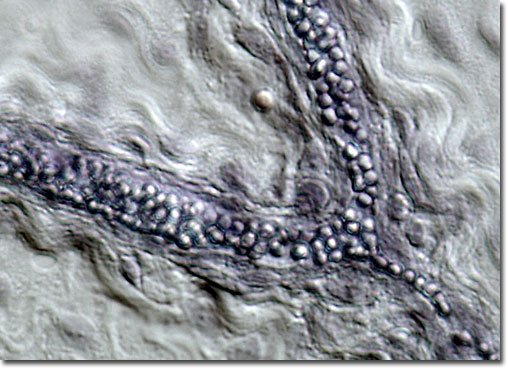|
Brown adipose tissue derives its name from the characteristic color it gains from densely packed mitochondria and rich vascularization. Although it acts similar to white adipose tissue in some respects, it has the unique ability to generate heat. Consequently, brown adipose tissue is particularly important to small mammals in cold environments and animals in hibernation. The tissue is most prominent, however, in newborns. In fact, though brown adipose tissue comprises about five percent of the weight of human babies, it is virtually nonexistent by the time adulthood is achieved.
|
